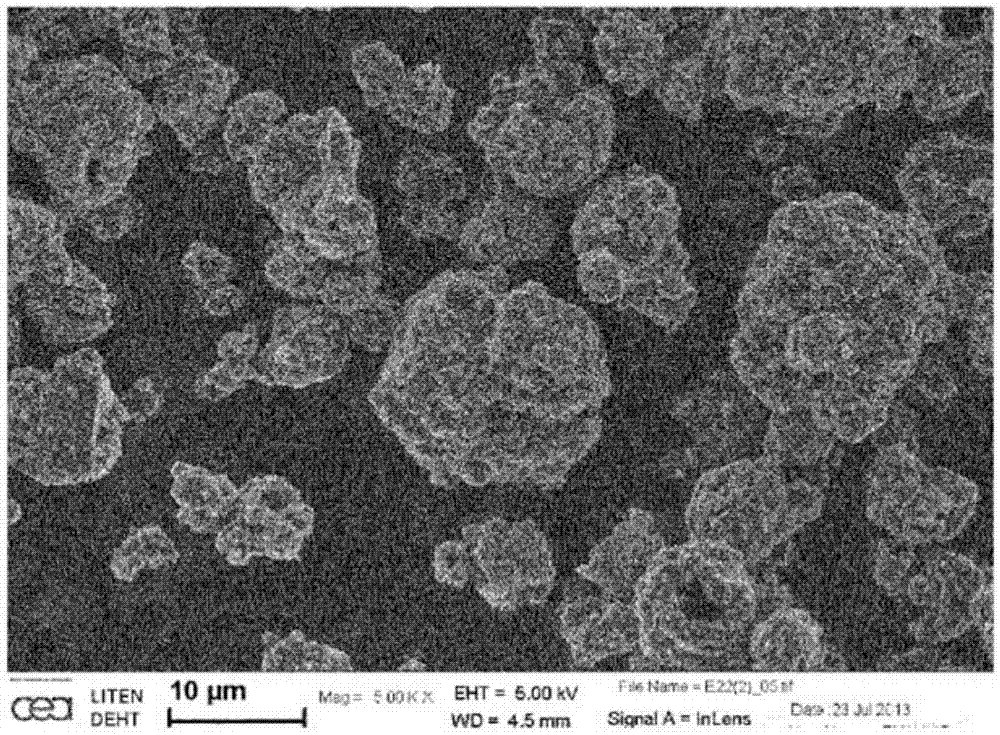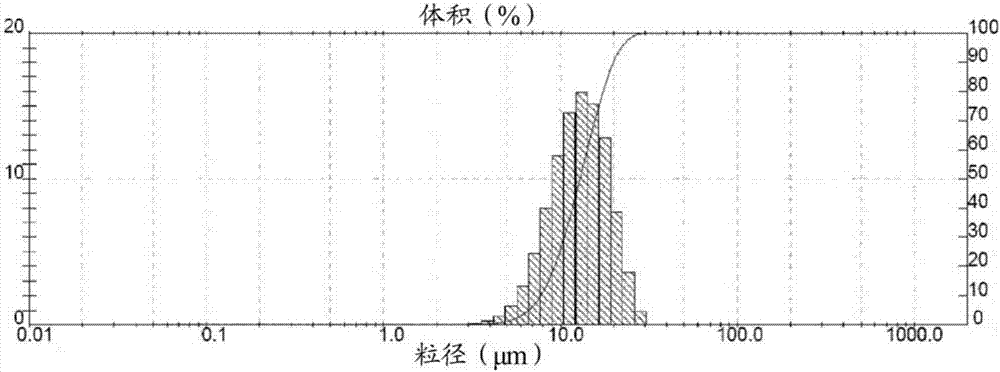Sioc composite electrode material
A technology of composite materials and particles, applied in battery electrodes, circuits, electrical components, etc., can solve problems such as insufficient electrochemical performance
- Summary
- Abstract
- Description
- Claims
- Application Information
AI Technical Summary
Problems solved by technology
Method used
Image
Examples
Embodiment 1
[0138] Preparation of SiOC composites according to the invention
[0139] A sample of 28.850 g of amorphous phenyl bridged polysilsesquioxane compound and 6.053 g of crystalline silicon was put together in a roller and ground at 150 rpm for 1 hour.
[0140] The resulting powder was then pyrolyzed at 1000 °C for 1 hour under an argon atmosphere.
[0141] After pyrolysis, the samples were recovered and milled at 400 rpm for 30 minutes.
[0142] The obtained powder was added to an aqueous solution (62.5 g / L) containing PVA dissolved at 60°C. The resulting mixture was spray dried at 100°C, and the powder was recovered.
[0143] The powder was heat-treated at 200°C for 16 hours in air, and then pyrolyzed at 1000°C for 1 hour under an argon atmosphere.
[0144] Analysis of the obtained powder
[0145] Elemental analysis
[0146] The silicon content of the powder obtained was measured by inductively coupled plasma (ICP) emission spectroscopy. After combustion in a high-freq...
Embodiment 2
[0158] Embodiment 2 (comparative embodiment)
[0159] A 10 g sample of the phenyl bridged polysilsesquioxane compound was pyrolyzed at 1000° C. for 1 hour under an argon atmosphere.
[0160] The recovered samples were then milled at 400 rpm for 5 minutes.
[0161] The obtained powder was added to an aqueous solution containing dissolved PVA (62.5 g / L) and dispersed crystalline silicon particles (27.4 g / L).
[0162] The mixture was spray dried at 100°C and the powder was recovered.
[0163] The powder was heat-treated at 200°C for 16 hours in air, and then pyrolyzed at 1000°C for 1 hour under an argon atmosphere.
Embodiment 3
[0165] Preparation of SiOC composites according to the invention
[0166] A sample of 28.850 g of amorphous phenyl bridged polysilsesquioxane compound and 6.053 g of crystalline silicon was put together in a roller and ground at 150 rpm for 1 hour.
[0167] The obtained powder was then pyrolyzed at 1000 °C for 1 hour under an argon atmosphere.
[0168] After pyrolysis, the samples were recovered and milled at 400 rpm for 30 min.
[0169] A 6.25 g dosage of solid PVA was added to the roll and the mixture was ground at 150 rpm for 1 hour. The powder is recycled.
[0170] The powder was heat-treated at 200°C for 16 hours in air, and then pyrolyzed at 1000°C for 1 hour under an argon atmosphere.
PUM
| Property | Measurement | Unit |
|---|---|---|
| particle size | aaaaa | aaaaa |
| specific surface area | aaaaa | aaaaa |
| particle diameter | aaaaa | aaaaa |
Abstract
Description
Claims
Application Information
 Login to View More
Login to View More - R&D
- Intellectual Property
- Life Sciences
- Materials
- Tech Scout
- Unparalleled Data Quality
- Higher Quality Content
- 60% Fewer Hallucinations
Browse by: Latest US Patents, China's latest patents, Technical Efficacy Thesaurus, Application Domain, Technology Topic, Popular Technical Reports.
© 2025 PatSnap. All rights reserved.Legal|Privacy policy|Modern Slavery Act Transparency Statement|Sitemap|About US| Contact US: help@patsnap.com



